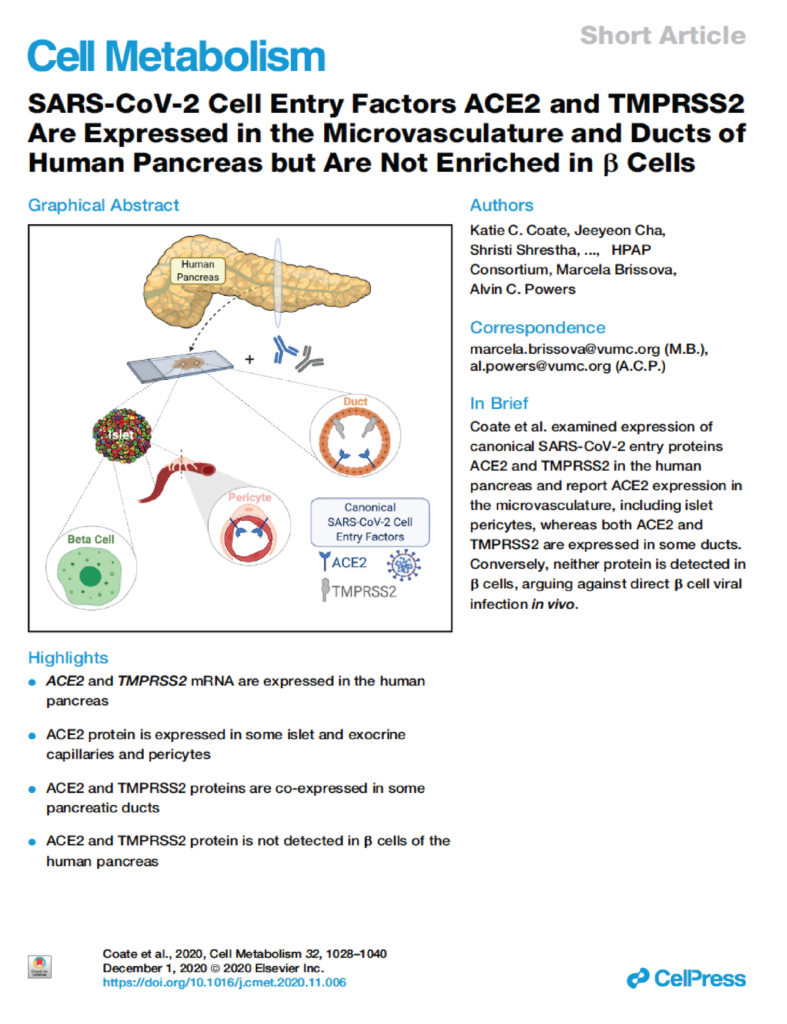Publications

SARS-CoV-2 Cell Entry Factors ACE2 and TMPRSS2 Are Expressed in the Microvasculature and Ducts of Human Pancreas but Are Not Enriched in beta Cells
Coate, K. C. ,Cha, J., Shrestha, S., Wang, W., Goncalves, L. M., Almaca, J., Kapp, M. E., Fasolino, M., Morgan, A., Dai, C., Saunders, D. C., Bottino, R., Aramandla, R., Jenkins, R., Stein, R., Kaestner, K. H., Vahedi, G., HPAP Consortium, Brissova, M., Powers, A. C.
Cell Metab
2020
Isolated reports of new-onset diabetes in individuals with COVID-19 have led to the hypothesis that SARS-CoV-2 is directly cytotoxic to pancreatic islet beta cells. This would require binding and entry of SARS-CoV-2 into beta cells via co-expression of its canonical cell entry factors, angiotensin-converting enzyme 2 (ACE2) and transmembrane serine protease 2 (TMPRSS2); however, their expression in human pancreas has not been clearly defined. We analyzed six transcriptional datasets of primary human islet cells and found that ACE2 and TMPRSS2 were not co-expressed in single beta cells. In pancreatic sections, ACE2 and TMPRSS2 protein was not detected in beta cells from donors with and without diabetes. Instead, ACE2 protein was expressed in islet and exocrine tissue microvasculature and in a subset of pancreatic ducts, whereas TMPRSS2 protein was restricted to ductal cells. These findings reduce the likelihood that SARS-CoV-2 directly infects beta cells in vivo through ACE2 and TMPRSS2.